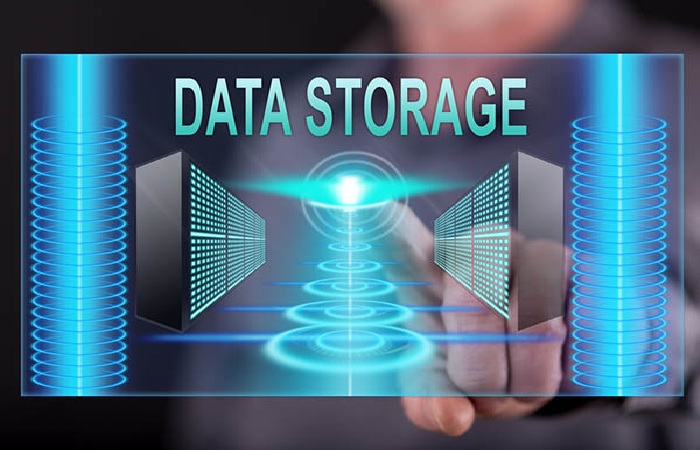Learn about the main types of data storage that exist and how to do them in your company

Information is the most important resource these days. And for it to be put to good use, we must understand the types of data storage and how they affect business performance.
Today, digital technology is an indispensable component for the success and performance of all companies, regardless of their size. Even individual micro-entrepreneurs need to know how to manage their data efficiently, expand Digital Marketing, and optimize their processes. Whether you operate in a service business like the Fair Credit Law Firm, or as a paper wholesaler, like Global Paper Source. You will need to stay up to date with digital technology advancements to remain relevant and ahead of your competition.
However, as a business grows, this task becomes more complex.
An important factor here is the existence of different types of data storage, which have positive and negative points for the business. If not done efficiently, it can become a massive waste of resources and lost productivity in the medium and long term.
It is vital to know the data storage models and their main characteristics to better handle this task. That is what we are going to talk about today.
Keep reading that we will address the following topics!
Table of Contents
What is data storage?
Simply put, data warehousing is the set of tools and methods used to store, catalog, and access the information used in a business. For this, different technologies are used, such as optical readers and data management software, among others, which keep this information preserved for future use.
The primary purpose of this storage is to ensure that it will be possible to retrieve this data later, regardless of any malfunctions or interruptions in processing.
In addition, the security of the data and its protection against possible cyberattacks must also be taken into account, that the number of cybercrimes is also growing.
Why is data storage necessary?

Most users don’t think about how data storage types affect overall business performance. However, as the level of the business increases, the importance of these optimizations also increases.
Some of the examples of that important value of data warehousing are below.
Ensure the integrity of the information
One of the goals of data storage and management tools is to ensure that the business has accurate and reliable information.
If the storage process is not carried out correctly, some of this information will likely be damaged, lost, or altered, compromising its integrity.
By investing in more effective data warehousing tools, we also reduce the chances that a system error will undermine the reliability of our information. In the long term, this risk reduction makes a big difference in improving the performance and efficiency of your team.
Greater accessibility to company data
Today, the use of information links to its volume and the ease with which employees can access data relevant to their work. If you have an extensive and secure database, you must think about how that information will be distributed to guarantee the best performance.
Good data warehousing systems take this into account, too, implementing tools that make it easier for staff to access critical data, as well as deeper analysis and comparisons. High-value resources for planning a digital marketing strategy, for example.
Flexibility in access points
It should be good to keep in mind that it is more common for companies to put flexibility first due to various changes in the market. Especially if the team tends to change their workstations frequently, or if a part of the employees works in a home office and needs easy access to the company system.
Today’s main types of data storage already favor this type of organization, allowing the same information to be easily be retrieved from different access points. In this way, you can keep track of processes from home or a new computer more efficiently.
What are the main types of data storage?
The way the data store varies depending on the type of technology use. They all have their pros and cons. However, most tend to fall into one of the two main groups.
YOU GIVE
- Acronym for “Direct Attached Storage,” This category includes all storage in which there is a physical connection between the hardware.
- where the data store and the computer reads it. It is the case of hard drives (HD), USB memories, SSD, among others.
- On the one hand, this type of technology is less flexible and efficient, especially when it comes to distributing information on a large scale.
- However, robust and direct storage can also promote information security and prevent loss in the event of a network failure.
NAS
- Acronym for “Network Attached Storage” or “Network Attached Storage.”
- In this case, the hardware on which the information store is different from the one access.
- It allows multiple computers to access the same data remotely.
- This method promotes the centralization of information, which can facilitate its internal administration. It makes storage more flexible and scalable, but it also increases data and software security requirements.
What types of devices are used for data storage?
To improve the different types of data storage, it is necessary to invest in new technologies and better devices, both DAS and NAS. Security is one of the main factors here, considering that the machine’s memory will not always protect data against virtual attacks or failures.
Let’s look at some of the main features that use today.
SSD
- This is a type of storage that allows faster data processing and transfer between different machines.
- As a result, the performance of the computer to access and store data becomes much higher.
- This technology requires more initial investment than standard processors.
- But the positive effect on overall system performance pays for itself quickly.
Hybrid flash arrays
- Using multiple technologies at the same time is one way to reduce dependency on a single tool.
- These principles apply here in hybrid arrays, where flash storage and hard disk combine.
- The idea of this combination is to create a happy medium between the two types of data storage.
- In this way, you can implement an effective solution in less time and at a more affordable price.
- Although a pure flash-array solution is more powerful, its initial cost is higher, which may be out of budget.
Cloud storage
- This solution has gained a lot of attention these days.
- Especially with the focus of companies increasingly turning to online digital spaces.
- Instead of storing data on the machine itself, everything is located on a remote server.
- In the cloud, which different computers can access simultaneously.
- The significant advantages of cloud storage are greater flexibility and stability.
- Since it is possible to make various changes to its internal system.
- still, ensure that the data is safe and easily accessible.
Backup mechanisms
- In cases of system malfunction or loss of performance.
- The idea is to have at least one or two backup copies of all your data,
- It is from customer information to blog content. That way, they can recover, even partially.
- For that, you need to invest in backup software, which comes as a service, or in-house backup systems.
- It also requires a significant initial investment, plus a dedicated team to keep this system running.
